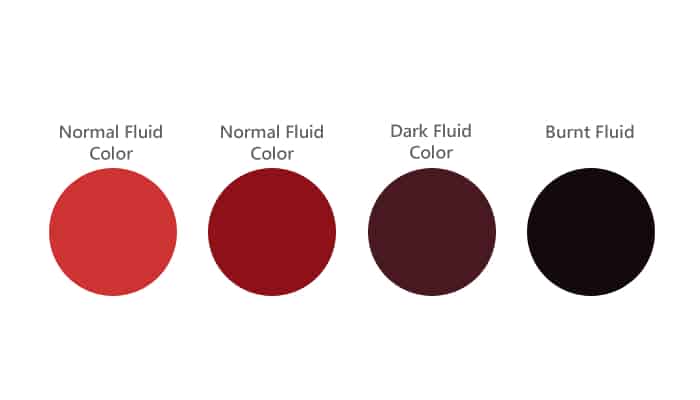Understanding Transmission Fluid for Your Ford Edge
When it comes to keeping your Ford Edge running smoothly, one of the most crucial elements is the transmission fluid. This fluid plays a vital role in lubricating the moving parts of your vehicle’s transmission, ensuring that everything operates efficiently. For the 2012 Ford Edge, using the correct type of transmission fluid is non-negotiable. Let’s break down what you need to know.
Manufacturer’s Recommendations
| Popular posts |
|---|
| What to do to prolong the life of your manual gearbox |
| Automatic transmission: what it is, how it works |
According to Ford’s specifications, the recommended transmission fluid for the 2012 Ford Edge is Ford Mercon LV. This fluid is specifically formulated to meet the unique needs of Ford’s automatic transmissions. Using the right fluid is essential for optimal performance and longevity of your vehicle’s transmission system.
Key Specifications
Here are some important specifications and characteristics of Ford Mercon LV transmission fluid:
- Viscosity: Mercon LV has a viscosity rating of 10W, which means it performs well in both high and low temperatures.
- Type: This is a synthetic blend fluid, designed to provide better protection and performance compared to conventional fluids.
- Compatibility: Mercon LV is backward compatible with Mercon V, but not the other way around. Always check your owner’s manual to ensure compatibility.
- Color: Typically, Mercon LV is a red fluid, which can help you identify leaks or contamination easily.
Why Use the Recommended Fluid?
Using the manufacturer-recommended fluid is not just a suggestion; it’s a necessity. Here’s why:
- Performance: Ford Mercon LV is engineered to provide superior performance in terms of shifting smoothness and responsiveness. Using a different fluid can lead to sluggish shifts and potential damage.
- Protection: The right fluid offers better protection against wear and tear, helping to prolong the life of your transmission. This is especially important in a vehicle like the Ford Edge, which may be subjected to various driving conditions.
- Warranty Compliance: If your vehicle is still under warranty, using the recommended fluid is crucial for maintaining warranty coverage. Using an incorrect fluid can void your warranty and lead to costly repairs.
Checking Fluid Quality
While we won’t dive into the specifics of checking fluid levels, it’s essential to keep an eye on the quality of your transmission fluid. If you notice any changes in color or consistency, or if you experience shifting issues, it may be time to consider a fluid change.
In summary, using the correct transmission fluid for your 2012 Ford Edge is vital for maintaining performance and reliability. Stick to Ford Mercon LV to ensure your vehicle runs as it should.
Recommended Oil Brands for Your Ford Edge Transmission Fluid
When it comes to maintaining your 2012 Ford Edge, choosing the right transmission fluid is crucial. While Ford Mercon LV is the recommended fluid, there are several brands that have garnered positive feedback from owners and automotive forums. Let’s explore some of the most trusted brands that meet the specifications for your vehicle.
Ford Mercon LV
It’s no surprise that the original manufacturer fluid, Ford Mercon LV, is at the top of the list. Many owners have reported the best performance when using this fluid. Here’s why:
- Designed specifically for Ford transmissions, ensuring compatibility and optimal performance.
- Users have noted smoother shifting and improved responsiveness when using this fluid.
- Widely available at Ford dealerships and many auto parts stores.
Valvoline MaxLife Multi-Vehicle ATF
Valvoline is a well-known name in the automotive industry, and their MaxLife Multi-Vehicle ATF is a popular choice among Ford Edge owners. Here’s what users are saying:
- Compatible with Mercon LV, making it a versatile option for those who want alternatives.
- Many users have reported that it helps reduce transmission noise and improves shifting quality.
- Valvoline’s formulation includes additives that help extend the life of the transmission.
Mobil 1 Synthetic LV ATF
Mobil 1 is another brand that frequently comes up in discussions among Ford Edge owners. Their Synthetic LV ATF is praised for its high performance:
- Offers excellent protection against wear, which is crucial for maintaining transmission health.
- Users have experienced better fuel efficiency and smoother gear changes.
- Many forum members recommend it for those who drive in extreme conditions, as it performs well in both hot and cold temperatures.
Castrol Transmax Import Multi-Vehicle ATF
Castrol is a trusted name in engine oils, and their Transmax Import Multi-Vehicle ATF has received positive feedback from Ford Edge owners:
- Compatible with Ford Mercon LV, making it a reliable alternative.
- Users have reported improved shifting performance and reduced slippage.
- Castrol’s formulation includes advanced additives that help maintain fluid stability and performance.
Royal Purple Max ATF
Royal Purple is known for its high-performance oils, and their Max ATF is no exception. Here’s what users are saying:
- Many owners have noted that it significantly enhances shifting smoothness and overall transmission performance.
- Royal Purple claims that their fluid provides superior protection against wear, which is a common concern among Edge owners.
- It’s often recommended for those who want to maximize the performance of their transmission.
Amsoil Synthetic Universal ATF
Amsoil is a brand that often comes up in discussions about high-quality synthetic fluids. Their Synthetic Universal ATF is a favorite among some Ford Edge enthusiasts:
- Compatible with Mercon LV, making it a solid choice for those looking for alternatives.
- Users have reported better performance in terms of shifting and overall transmission response.
- Amsoil products are known for their longevity, which can be a cost-effective choice in the long run.
Owner Feedback and Experiences
Many Ford Edge owners have taken to forums and social media to share their experiences with various transmission fluids. Here are some common themes:
- Most owners emphasize the importance of sticking to fluids that meet the Mercon LV specification.
- Many have shared stories of improved performance after switching to synthetic options, particularly in terms of shifting smoothness.
- Some users have reported issues with cheaper, generic brands that do not meet the required specifications, leading to poor performance and even transmission problems.
In summary, while Ford Mercon LV is the go-to choice for your 2012 Ford Edge, several reputable brands offer high-quality alternatives that have received positive feedback from fellow owners. Always ensure that the fluid you choose meets the necessary specifications to keep your transmission running smoothly.
Change Interval for Your Ford Edge Transmission Fluid
Understanding when to change your transmission fluid is crucial for maintaining the health of your 2012 Ford Edge. Regular fluid changes can prevent costly repairs and ensure that your vehicle runs smoothly.
Recommended Change Intervals
For the 2012 Ford Edge, the general recommendation for changing the transmission fluid is every 30,000 to 60,000 miles (approximately 48,000 to 96,000 kilometers). However, this can vary based on driving conditions and habits. Here are some factors to consider:
- Driving Conditions: If you frequently drive in stop-and-go traffic, tow heavy loads, or operate in extreme temperatures, you may need to change your fluid more often.
- Fluid Quality: The condition of your transmission fluid can also dictate how often it should be changed. If the fluid appears dark or has a burnt smell, it’s time for a change.
- Manufacturer Guidelines: Always refer to your owner’s manual for specific recommendations tailored to your vehicle.
Partial Transmission Oil Changes
In many cases, a full transmission fluid change is not feasible without removing the transmission from the vehicle. This is due to the design of many automatic transmissions, which do not allow for easy access to the fluid reservoir. Instead, many owners opt for partial transmission oil changes, which can be performed more easily and frequently.
What is a Partial Change?
A partial transmission oil change involves draining a portion of the old fluid and replacing it with new fluid. This method is often more practical and can still provide benefits, especially if done regularly.
Benefits of Partial Changes
Here are some advantages of opting for partial transmission fluid changes:
- Cost-Effective: Partial changes are generally less expensive than full fluid changes, as they require less labor and time.
- Improved Fluid Quality: Regular partial changes can help maintain better fluid quality over time, reducing the risk of transmission issues.
- Less Downtime: Since partial changes can be completed quickly, you won’t have to spend as much time without your vehicle.
Statistical Support
According to automotive experts and various studies, regular maintenance, including fluid changes, can significantly extend the life of your transmission. A report from the Automotive Maintenance and Repair Association (AMRA) indicates that vehicles that receive regular transmission fluid changes can last up to 50% longer than those that do not.
Additionally, a survey conducted by a leading automotive service provider found that 75% of drivers who adhered to a regular transmission fluid change schedule reported fewer transmission-related issues compared to those who neglected this maintenance.
In summary, while the recommended change interval for your 2012 Ford Edge transmission fluid is between 30,000 to 60,000 miles, understanding the benefits of partial fluid changes can help you maintain your vehicle’s performance without the need for a full fluid change every time. Regular maintenance is key to ensuring the longevity and reliability of your transmission.
What Color Should Transmission Fluid Be?


